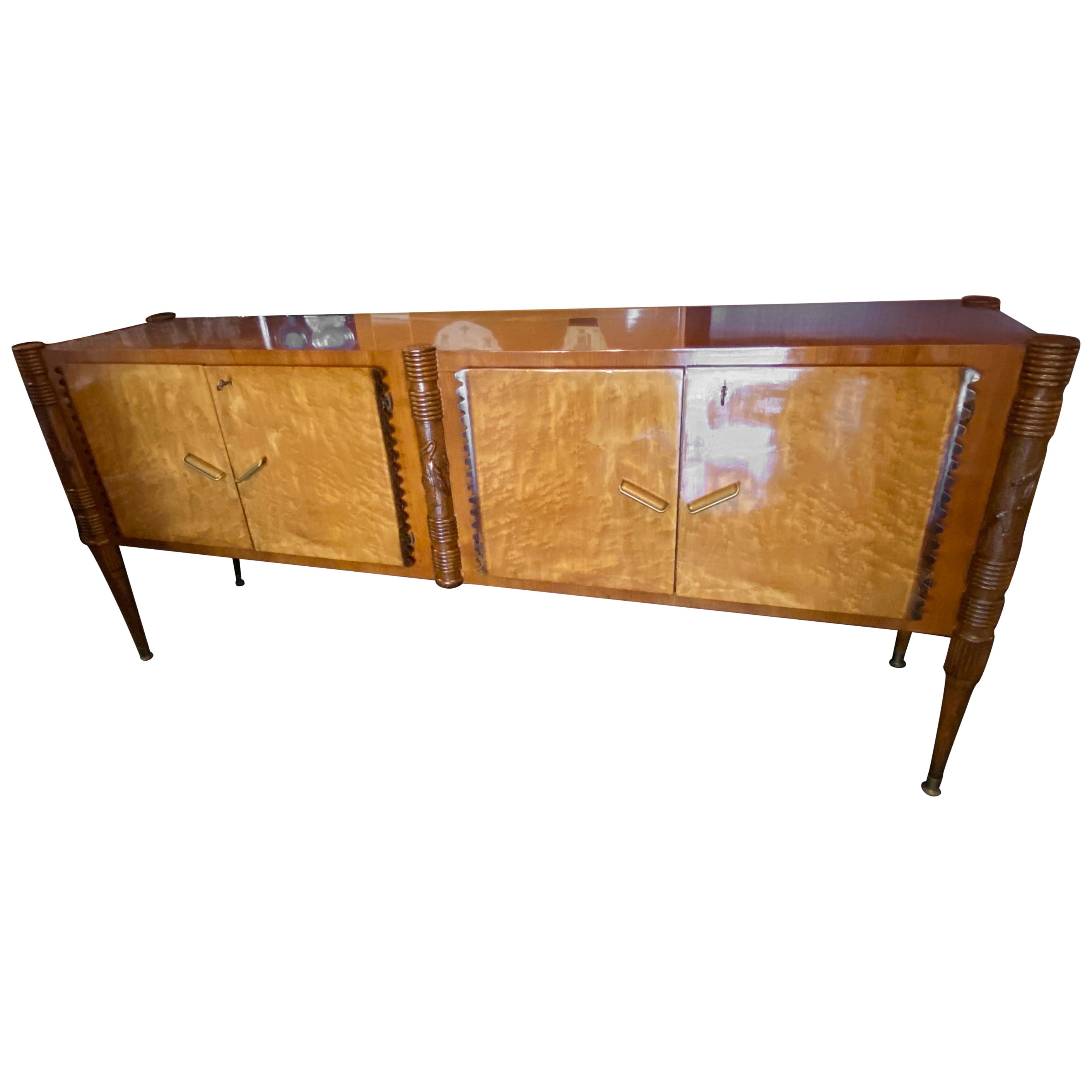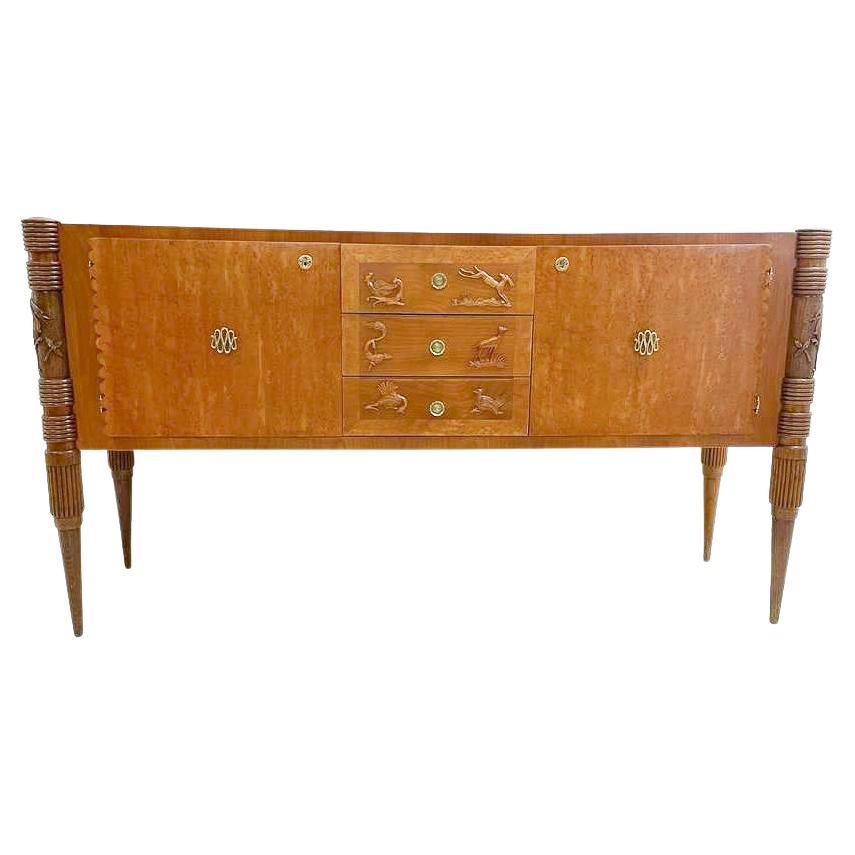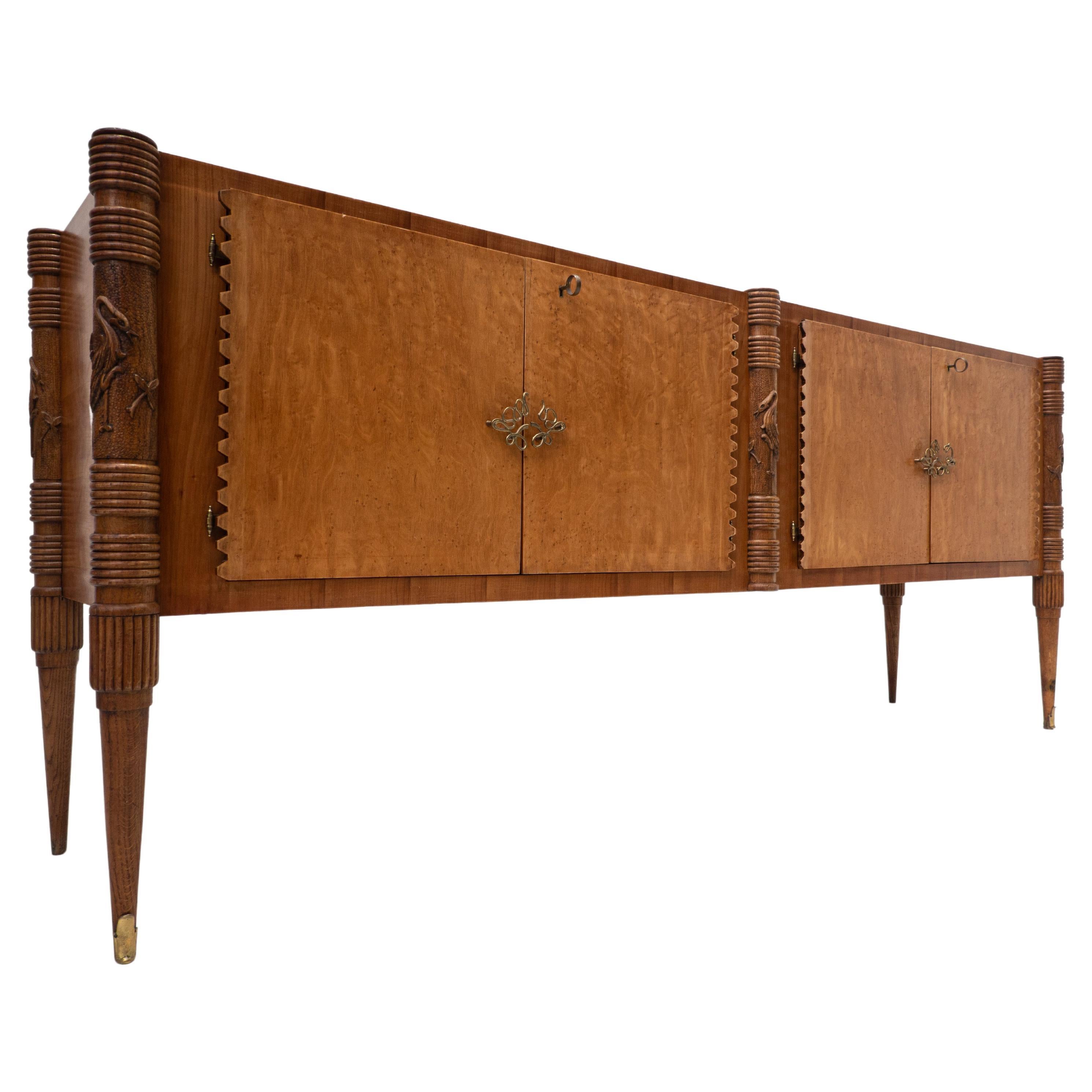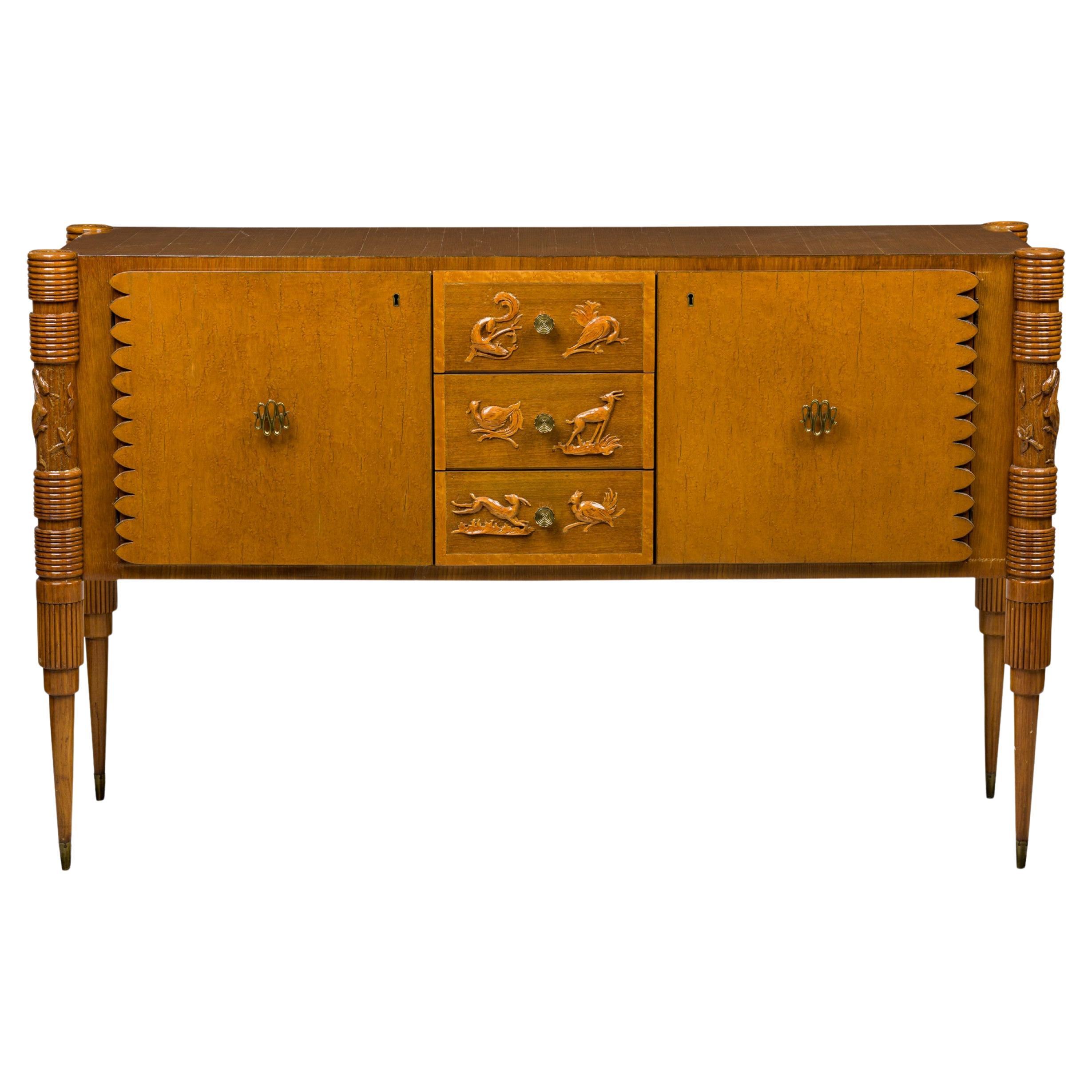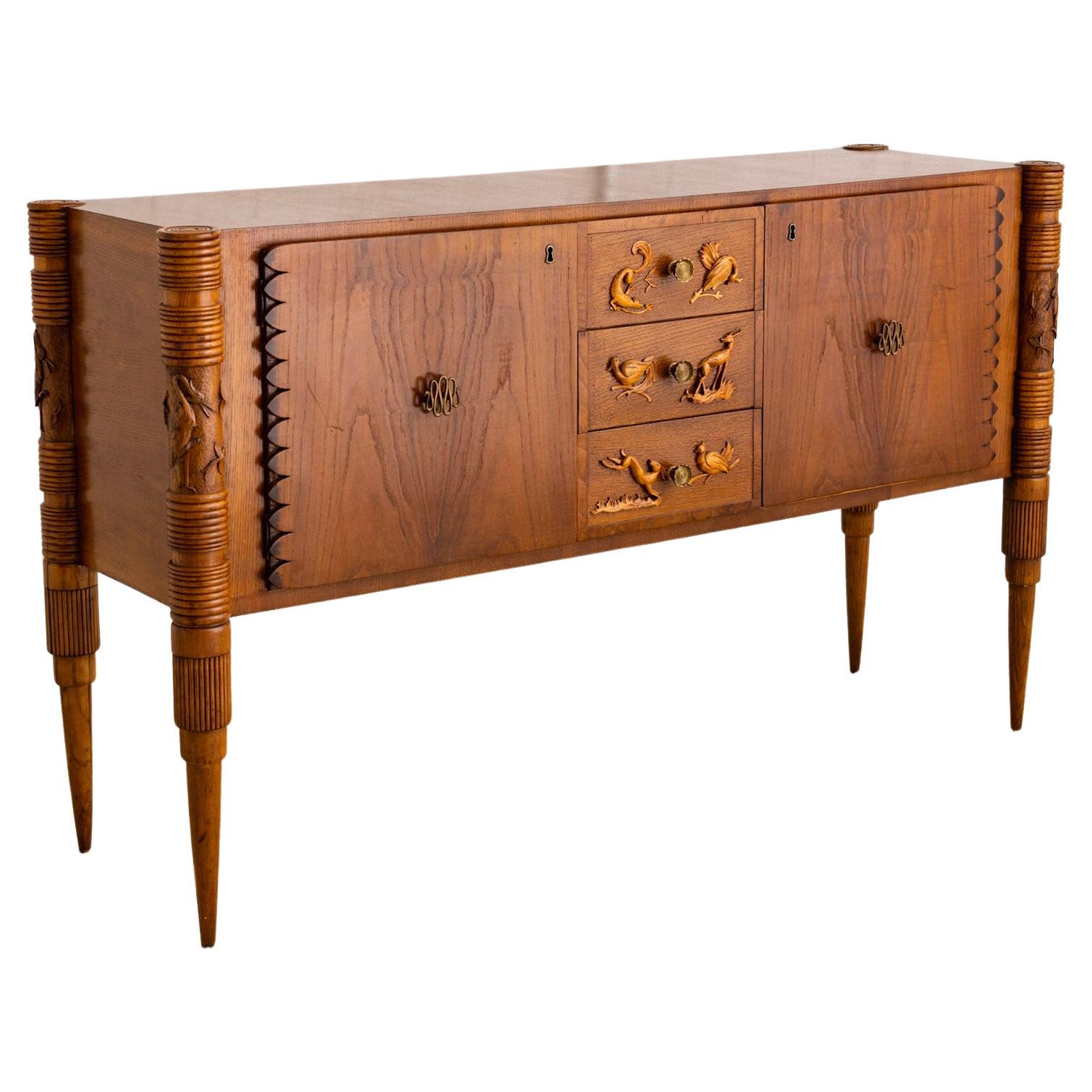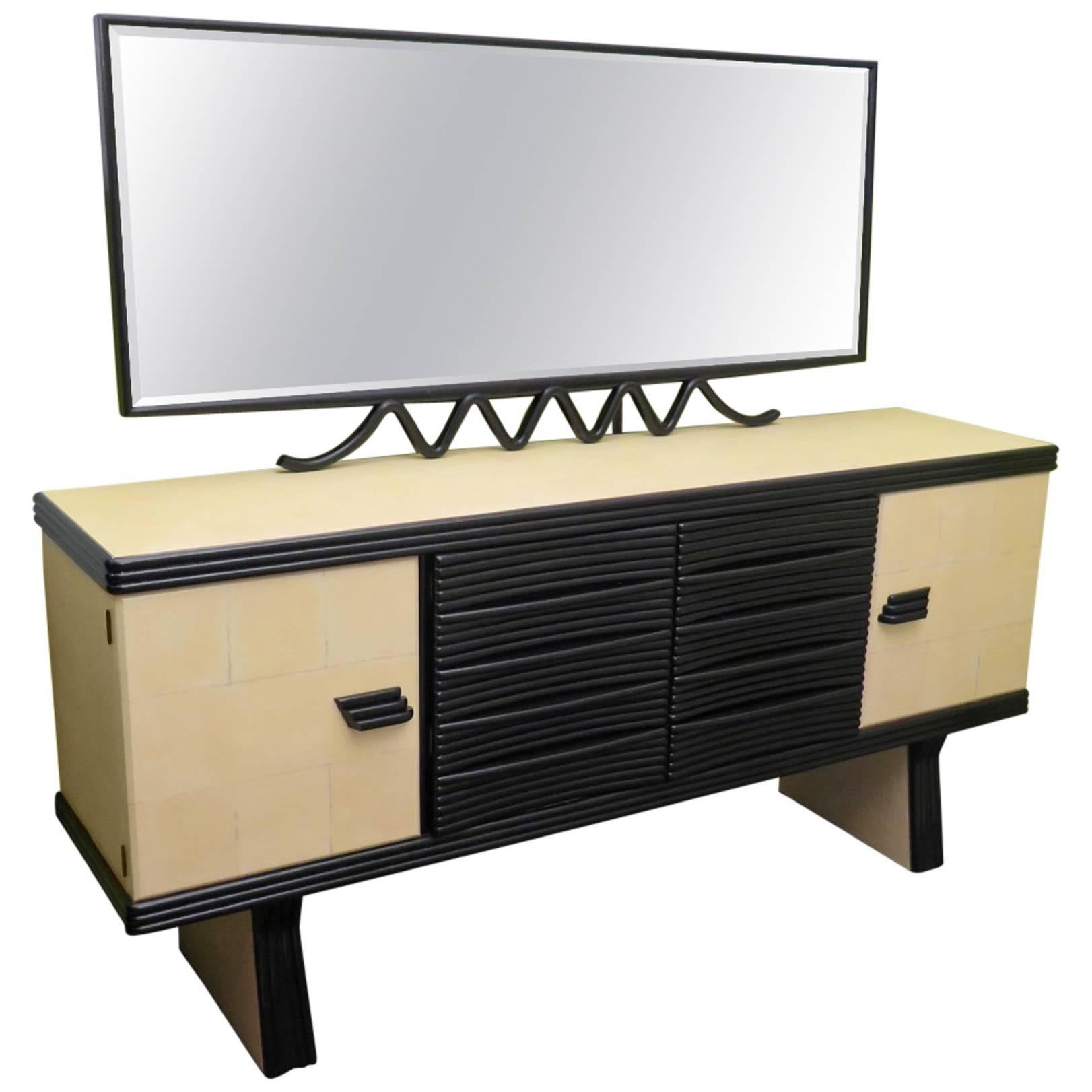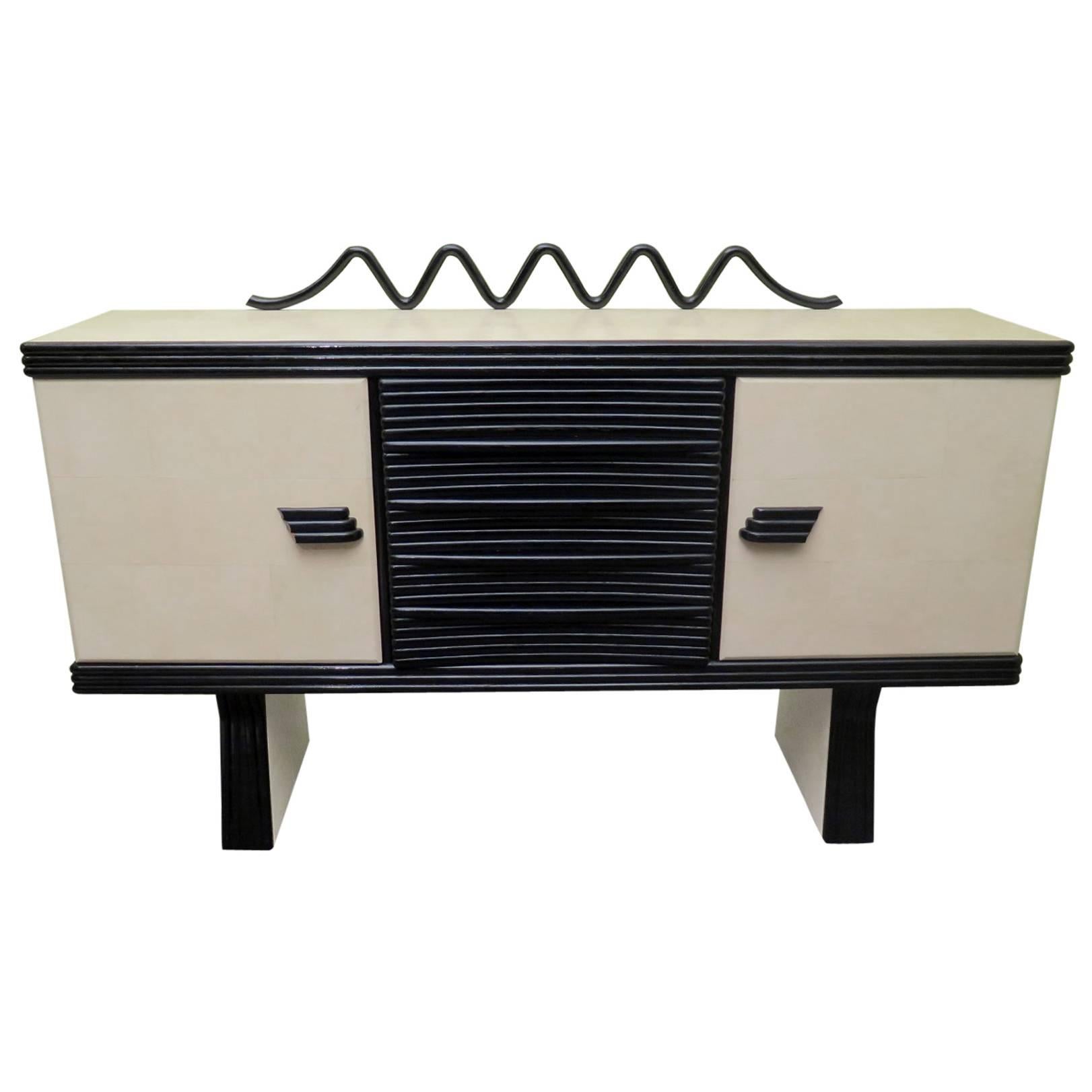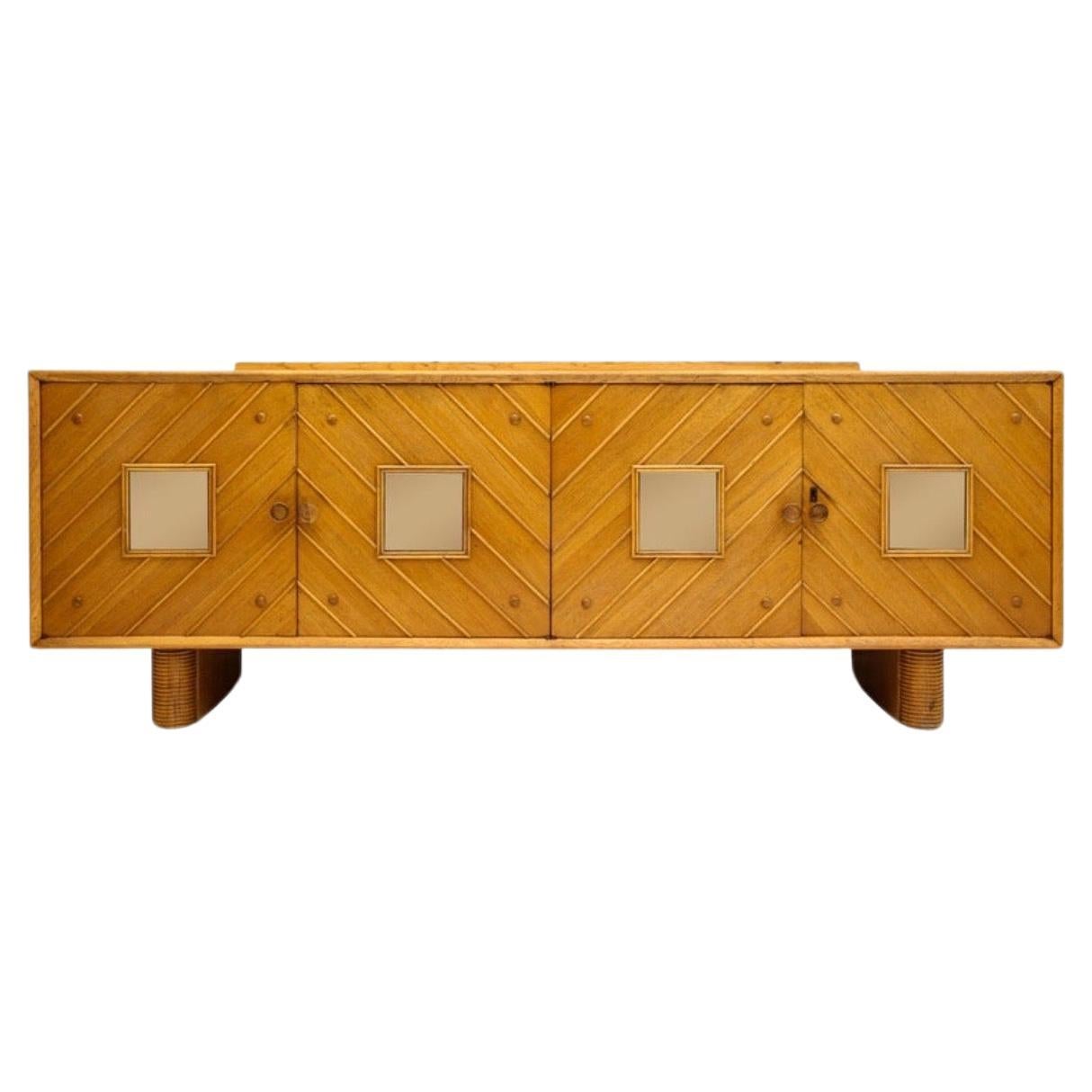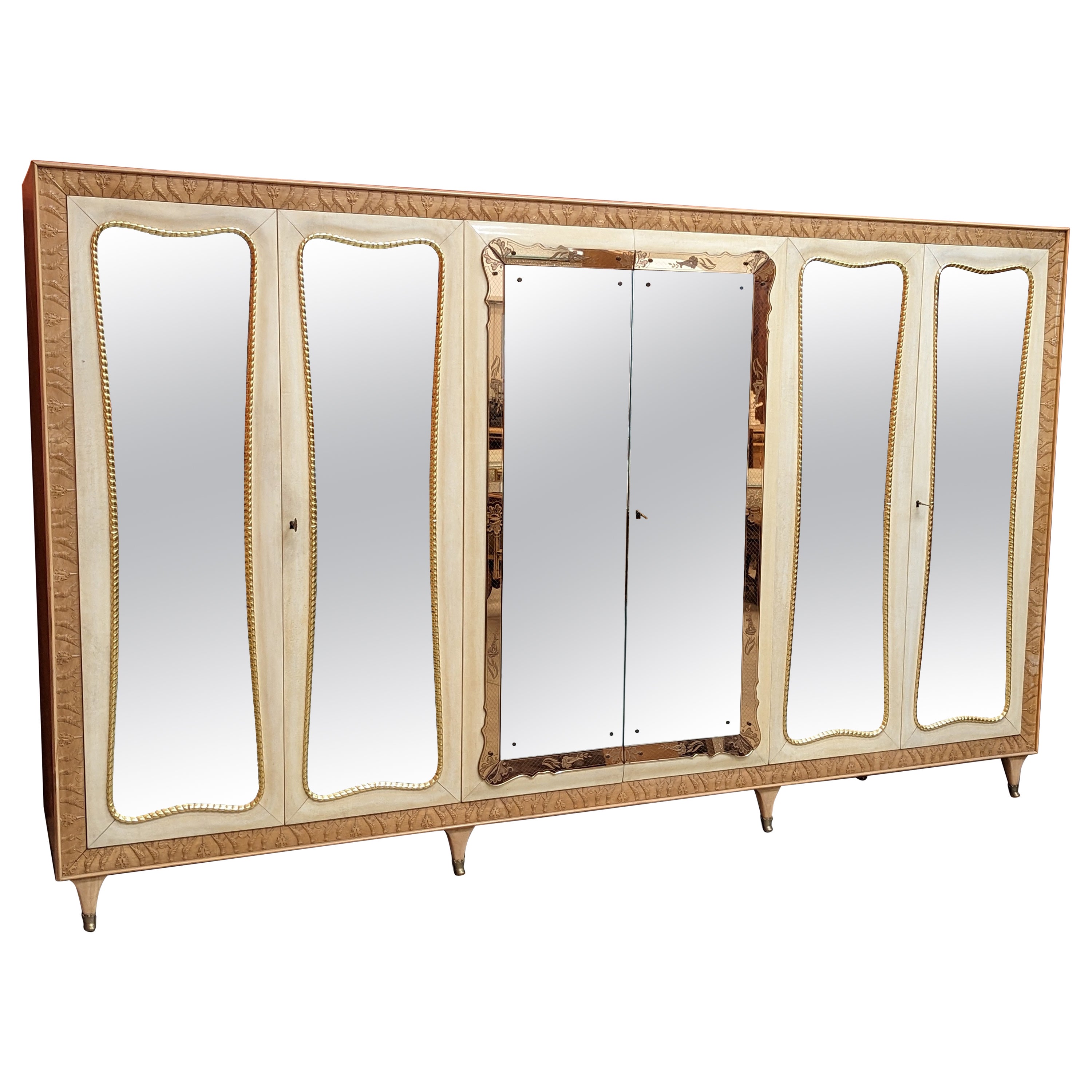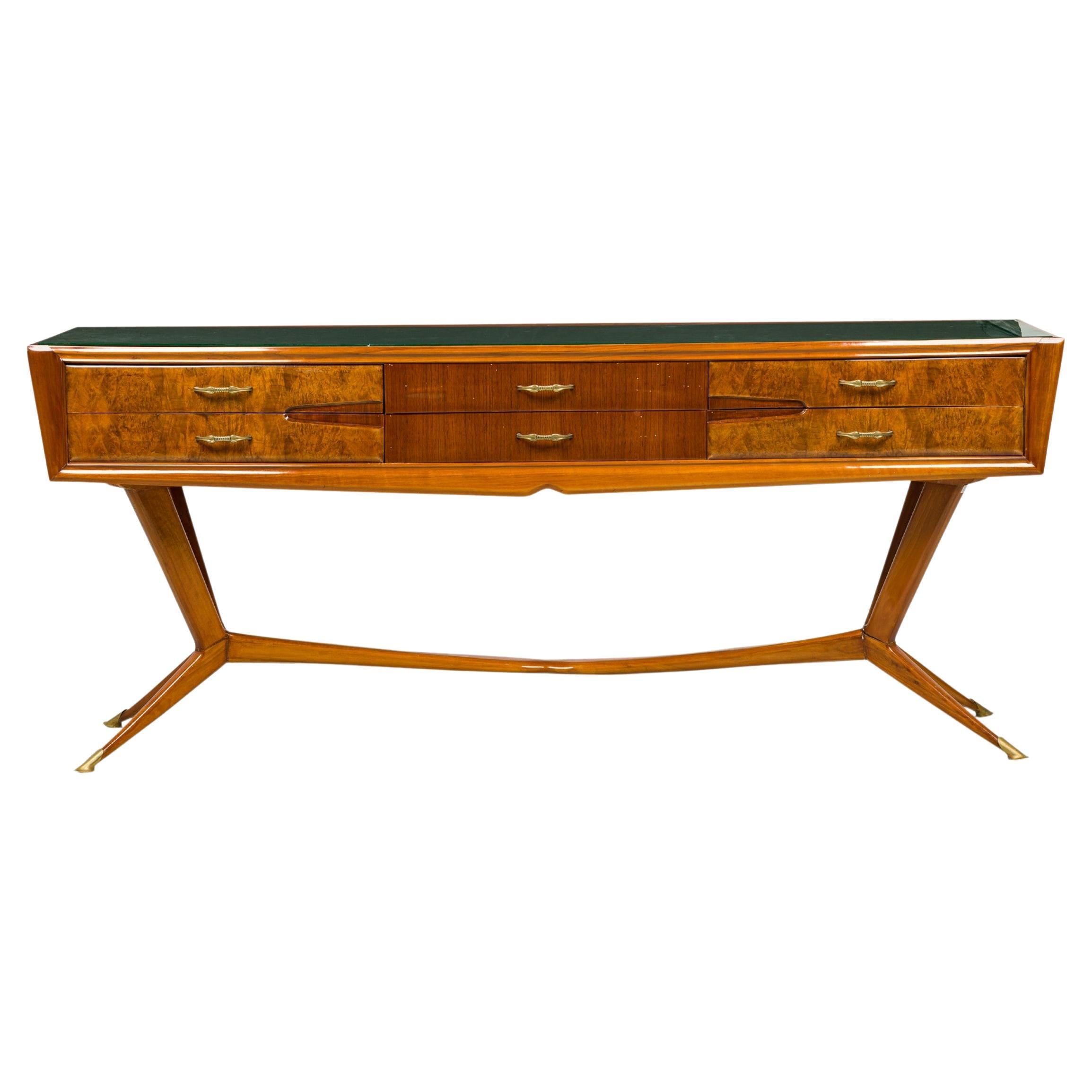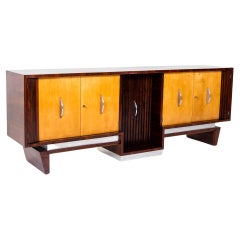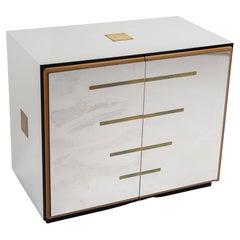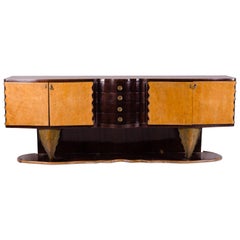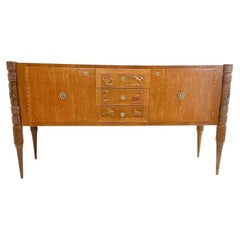
Sideboard by Pier Luigi Colli, Italy, 1950s
View Similar Items
Want more images or videos?
Request additional images or videos from the seller
1 of 7
Sideboard by Pier Luigi Colli, Italy, 1950s
About the Item
- Creator:Pier Luigi Colli (Designer)
- Dimensions:Height: 38.98 in (99 cm)Width: 63 in (160 cm)Depth: 19.69 in (50 cm)
- Style:Mid-Century Modern (Of the Period)
- Materials and Techniques:
- Place of Origin:
- Period:
- Date of Manufacture:1950s
- Condition:Wear consistent with age and use.
- Seller Location:Greding, DE
- Reference Number:1stDibs: LU101425062493
About the Seller
4.9
Vetted Seller
These experienced sellers undergo a comprehensive evaluation by our team of in-house experts.
Established in 1987
1stDibs seller since 2013
444 sales on 1stDibs
Typical response time: 10 hours
More From This SellerView All
- Sideboard with Bar Element by Franco Albini, Italy, 1930sBy Franco AlbiniLocated in Greding, DELarge four-door sideboard designed by Franco Albini in the 1930s. The Art Deco sideboard is veneered on all sides and fitted with chrome half-moon handles and set off by means of ver...Category
Vintage 1930s Italian Mid-Century Modern Sideboards
MaterialsMaple
- Sideboard, Italy 20th CenturyLocated in Greding, DEMirrored sideboard with two doors and polished laminated wood edge and brass applications. Inside it is equipped with shelves and painted black.Category
20th Century Italian Modern Sideboards
MaterialsBrass
- Sideboard, Italian Manufactory, Mid-20th CenturyLocated in Greding, DEFour-door sideboard with mirrored doors standing on tapering legs with brass sabots.Category
Mid-20th Century Italian Mid-Century Modern Sideboards
MaterialsBrass
- Sideboard Probably Italy 19th CenturyLocated in Greding, DEDemi Lune sideboard with white marble top and louvered doors.Category
Antique 19th Century Italian Sideboards
MaterialsMarble
- Sideboard, Probably France 1930sLocated in Greding, DESideboard on elegant iron frame with flared saber legs, six drawers and one door. Above the drawers can be pulled out more countertops.Category
Vintage 1930s French Art Deco Sideboards
MaterialsIron
- Sideboard, Probably France 1930sLocated in Greding, DEFour-door sideboard on elegant iron frame with flared saber legs. Interior partition consists of shelves and drawers.Category
Vintage 1930s French Art Deco Sideboards
MaterialsIron
You May Also Like
- 1950s Mid-Century Modern Hand-Carved Wood Italian Sideboard by Pier Luigi ColliBy Pier Luigi ColliLocated in Aci Castello, ITThis Large Sideboard by Pier Luigi Colli is an exquisite and iconic piece of furniture that exemplifies the craftsmanship and design aesthetics of the mid-20th century. Pier Luigi Co...Category
Mid-20th Century Italian Mid-Century Modern Sideboards
MaterialsWood
- Italian Art Deco Sideboard by Pier Luigi Colli, 1930sBy Pier Luigi ColliLocated in Rome, ITElegant sideboard in ash and mahogany with magnificent legs that come out from the base. The same furniture is available the table, eight chairs, and the unique cabinet bar. Wanting ...Category
Vintage 1930s Italian Art Deco Sideboards
MaterialsAsh, Mahogany
- Mid-Century Italian Sideboard by Pier Luigi Colli, Ash Wood, 1940sBy Pier Luigi ColliLocated in Brussels, BEMid-Century Italian Sideboard by Pier Luigi Colli, Ash Wood, 1940sCategory
Vintage 1940s Sideboards
MaterialsWood
- Large Italian Wooden Sideboard by Pier Luigi Colli with Four Doors, 1940sBy Pier Luigi ColliLocated in Brussels, BELarge Italian wooden sideboard by Pier Luigi Colli with four doors, 1940s.Category
Vintage 1940s Italian Mid-Century Modern Sideboards
MaterialsWood
- Pier Luigi Colli Italian Burled Birch and Carved Bird Design SideboardBy Pier Luigi ColliLocated in New York, NYItalian midcentury (1950s) sideboard with a burled birch veneer, having two exterior cabinet doors with ribbon design brass door pulls and a scalloped carved edge, centering three dr...Category
20th Century Italian Mid-Century Modern Sideboards
MaterialsMetal, Brass
- Pier Luigi Colli Large Sideboard in Wood with Drawers Italian Manufacturer 1930sBy Pier Luigi ColliLocated in Montecatini Terme, ITLarge sideboard is entirely realized in oak wood, with four drawers on each side (for a total of eight drawers) and a central storage unit. Designed by Pier Luigi Colli Italian Manufacture from 1938 ca. To reconstruct the story of Pier Luigi Colli, we must take a leap back to the 19th century in Turin, a multifaceted city, in some ways controversial due to its austere and sometimes introverted character, but at the core of a creative drive: and if it is primarily known for its automobile industry, there was a time when Turin was at the height of fame also in the field of furniture and embroidery, thanks to the presence of two entrepreneurial realities. On the one hand there was the MIRAM (Italian Hand-Made Embroidery Manufacture) founded by Pietro Colli in 1850, specializing in gobelin fabrics and bandera embroideries. His daughter Teresa traveled between Italy and Paris to discover the latest trends in fabrics and embroidery, while her younger brother, Pier Luigi Colli (1895-1968), the star of this story, joined the company in 1921. Distinguishing himself for his enterprising personality and willing to continue his father's profession, Pier Luigi was known to his contemporaries as "the artist interior designer", and had no doubts about his future: he moved temporarily to Paris, where he attended L'Ecole des Beaux Arts Décoratives. The other great Turin manufacturer to be mentioned is Martinotti, founded in 1931 by Giuseppe Martinotti and supplier of fine furnishings for the Savoy court, pieces which were characterized by a typically 19th century eclectic style, generally made of exotic woods featuring ivory and tortoiseshell inlays: at that time, Martinotti represented the top of internationality, having even participated in the 1875 Philadelphia exhibition! The two brands' fate merged in 1902, a decisive year for Turin which, hosting the International Exhibition of Modern Decorative Art, became the cradle of the spread of the Liberty style in Italy. In the exhibition, Martinotti exhibited an elegant interior, in which all the textile parts, from the curtains to the seat upholstery, was made by Colli. It was in 1926 that Colli (MIRAM) finally acquired Martinotti, founding a laboratory where, from the savoir faire of the two companies, complete pieces of furniture were created and tailor-made for the customer, from the structure to its upholstery. Meanwhile, Pier Luigi Colli was living in Paris, the ideal place to be in 1925, when the International Exhibition of Modern Decorative and Industrial Arts brought him closer to the work of one of his putative fathers, the great French cabinet maker Jacques-Émile Ruhlmann (Paris, 1879 - 1933). Thanks to Paris, Pier Luigi intertwined contacts with the international beau monde, he started to import Lalique glass from France, while the Colli's clientele expanded and special commissions arrived, such as the creation of the Royal Train of the Savoy family made with Fiat, or the lecture hall in the University of Turin. The success of a brand is also measured by its openness to establishing collaborations with the great designers of its time, in the case of Colli resulting in important creative partnerships: from Gio Ponti, who relied on the brand for his Richard Ginori project in Rome, up to Carlo Mollino, who created with Colli the handrails of the RAI (national TV) auditorium and the windows of the Teatro Regio in Turin; also in Turin, the Morbelli architects collaborated with Colli for the furnishings of the RAI skyscraper, and the architects Gabetti Isola for the interiors of the Stock Exchange in Turin. In the 40s and 50s, having opened a branch in Rome, Colli was at the peak of productivity. The embroidery and textile section continued to be one of its strengths, keeping alive the relations with France and its great masters: among the inspirations were the geometric shapes of the fabrics of Ruhlmann's interiors, or the tactile carpets made by designer Mariod Dorn. And so, another Colli trademark become the "textured carpet...Category
Vintage 1930s Italian Mid-Century Modern Sideboards
MaterialsWood, Oak
